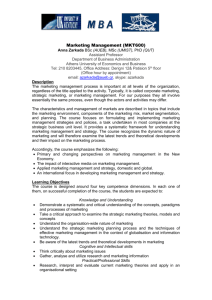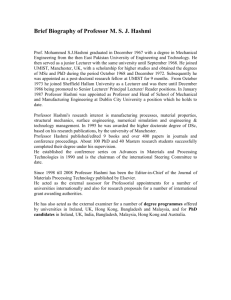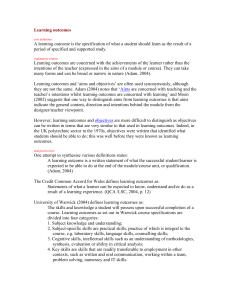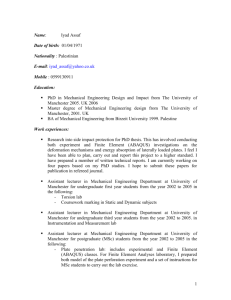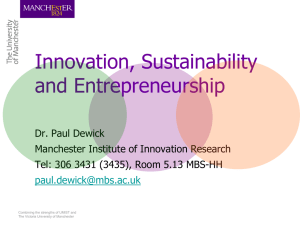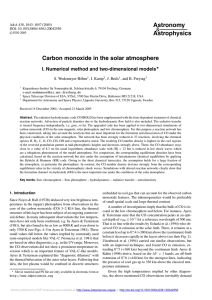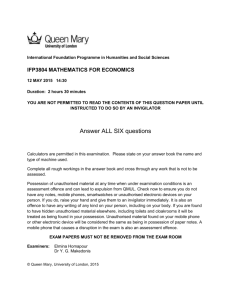CT218_Lect10-Intellectual Property
advertisement
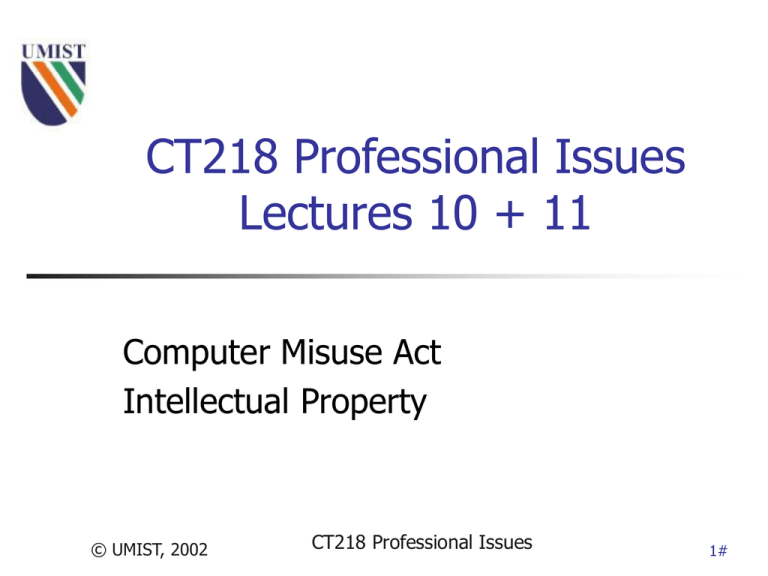
CT218 Professional Issues Lectures 10 + 11 Computer Misuse Act Intellectual Property © UMIST, 2002 CT218 Professional Issues 1# Computer Misuse Act 1990 S 1 – Basic Offence Obtain unauthorised access to computer material (includes “browsing” or “probing”) Aimed at “benign hacker” Even if hacker is not aiming at particular programs or data programs or data of a particular kind programs or data held in any particular computer Penalty: up to 6 months in jail or £5000 fine © UMIST, 2002 Professional Issues / Lecture 3 Section 2 - Hacking with intent to commit a serious crime Obtain unauthorised access to computer material with intent to commit or facilitate the commission of a serious crime Applies even if further offence does not involve use of a computer further offence is not in fact committed further offence is not possible (e.g. victim dead) Penalty: up to 5 years in jail under the CMA (plus further penalty for the further offence itself e.g. blackmail, death or injury, etc.) © UMIST, 2002 Professional Issues / Lecture 4 S. 3 - Unauthorised modification of computer material Covers: Wiping out data Circulating “infected” material (e.g. virus) Unauthorised addition of virus or worm to a computer “library” of programs (to use up the computer capacity) Unauthorised addition of password to a data file (to make it inaccessible to people who don’t know the password) Unlawful activities may also constitute an offence under other legislation, e.g. forgery, theft, etc. © UMIST, 2002 Professional Issues / Lecture 5 Intellectual Property From the Reading List Bott, F. et al Professional Issues in Software Engineering 3rd Ed., Taylor and Francis, Chapter 6 © UMIST, 2002 Professional Issues / Lecture 6 Legal mechanisms Trade Secrecy Patents Copyright Trade Mark Registered Design Domain Name protection © UMIST, 2002 Professional Issues / Lecture 9 Trade secrecy Must have novelty represent economic investment by claimant have involved development effort have been subject of considerable effort to protect secrecy Mechanisms non-disclosure clauses in contracts of employment; licence agreements © UMIST, 2002 Professional Issues / Lecture 10 Trade secrecy limitations Can’t enforce employee confidentiality to extent of preventing re-use of ideas Similarly, licensing agreements can’t prevent users from exploiting experience with proprietary software to build ‘a better mousetrap’. Strong protection allows owner to keep out of public realm, but once exploited, this is lost. © UMIST, 2002 Professional Issues / Lecture 11 Patents Read Definition in handouts A grant of the right to exclude others from making, using or selling one’s invention; includes right to licence others to make, use or sell it a legitimate monopoly lasts 20 years (UK) © UMIST, 2002 Professional Issues / Lecture 14 Patents in Employer/Employee relationship Patentable inventions by employees belong to the employee unless Developed in the normal course of employee’s duties Or in specifically assigned duties And the development of the invention could be anticipated as likely to arise from the work Or employee is a senior manager © UMIST, 2002 Professional Issues / Lecture 15 Patent principles Purpose is the advancement of the useful arts and sciences not simply the right of inventors to reap rewards a means not an end Foster inventions Promote disclosure of inventions Assure ideas in public domain remain free improve economy and employment © UMIST, 2002 Professional Issues / Lecture 16 Patent claims Must fall within the category of permissible subject matter: “a process, machine, manufacture or composition of matter or … an improvement thereof.” Must satisfy three tests: utility novelty non-obviousness © UMIST, 2002 Professional Issues / Lecture 17 Varieties of software licence: Commercial end user Single copy licence restricted to one machine special terms for categories of user, e.g. student Multiple-copy licence Network licence sometimes eased to one machine at work and one at home or a portable up to N images in simultaneous use Site/Department/Enterprise licence © UMIST, 2002 Professional Issues / Lecture 20 Approaches Developer’s licence Shareware Free for non-commercial use Freeware GNU Public licence Details in notes >>> © UMIST, 2002 Professional Issues / Lecture 21 Copyright works Original literary, dramatic, musical and artistic works Sec 3 of 1988 Act defines literary work to include a table or compilation, a computer program, preparatory design material for a computer program and certain databases Sound recordings, films, broadcasts and cable programmes The typographical arrangement of published editions © UMIST, 2002 Professional Issues / Lecture 28 The exclusive rights of the copyright holder [“the six acts”] Copy the work Including making copies which are transient or incidental to some other use of the work Issue copies to the public Rent or lend the work to the public Perform, play or show the work in public Broadcast the work or include it in a cable programme service Make an adaptation of the work or do any of the above with an adaptation © UMIST, 2002 Professional Issues / Lecture 29 Infringement of Copyright: Primary Infringement Anyone who does any of the six acts is liable for primary infringement even if unaware the work protected by copyright Infringes the civil rights of the copyright owner Not regulated by criminal law © UMIST, 2002 Professional Issues / Lecture 30 Secondary Infringement Sections 22 to 26 or 1988 Act Must know or have reason to believe actions infringe copyright Breaches civil rights, and may amount to a criminal offence © UMIST, 2002 import, possess an infringing copy in the course of a business, sell, let for hire, distribute so as to prejudice owner; make, import, sell, hire, possess equipment for copying; transmit or broadcast Professional Issues / Lecture 31 Permitted Acts Fair dealing private study/research; criticism or review; reporting current events Not fair dealing to convert a low level program to a higher level language Backup copies Max of one copy allowed. None if supplied on non-volatile medium © UMIST, 2002 Professional Issues / Lecture 32 Permitted Acts Cont’d Transfers of works (Sec 56) If A sells copy to B, must retain no copies Decompilation for the purpose of interoperability permitted if this is the only way to obtain information necessary to enable interoperability - not if owner publishes API © UMIST, 2002 Professional Issues / Lecture 33 Permitted Acts Cont’d Error correction if necessary to its lawful use provided this is not prohibited by any contract term Databases a lawful user may download if necessary to access the contents or part of contents Doing anything in relation to a database for commercial research is not fair dealing © UMIST, 2002 Professional Issues / Lecture 34 Remedies for Breach of Copyright Search and seizure, injunctions, damages (only if aware), action for profits made If copying is flagrant, court may award additional damages Copyright owner has a right to enter premises without force to seize and confiscate copyright material and copying equipment © UMIST, 2002 Professional Issues / Lecture 35 Databases To be covered by copyright (1988), had to be original, representing author’s intellectual effort. Would not apply to an alphabetical listing. Considered unfair to owners of directories. EU Directive 96/6EC and Copyright and Rights in Databases Regulations 1997 If .. “substantial investment in obtaining, verifying or presenting the contents of the database,” a 15 year copyright-like protection is granted. © UMIST, 2002 Professional Issues / Lecture 36 Case: antiquesportfolio.com Unauthorised use of images by web designer UK court backed website owner who refused to pay designers’ fees (and sued them for damages) because the designers had used pictures in breach of a third party copyright Court said that their was an implied duty of care on the part of the designers not to include works that were knowingly copied See: “Information required in a Web Development Agreement” and “Web Development Deals” from out-law.com © UMIST, 2002 Professional Issues / Lecture 43 Who Is the Copyright Owner? The author (person who creates the work) The author’s employer (if the author is employee) Not necessary for there to be an IPR clause in the contract of employment Copyright ownership will belong to the employer UNLESS a contract clause specifies otherwise Independent consultants own copyright unless the client insists on specifying otherwise in the contract [Compare with Patents in Employer/Employee relationship (15)] © UMIST, 2002 Professional Issues / Lecture 44 Licensing and Assignment Copyright owner granting licence does not give up ownership licences may be exclusive or non-exclusive need not be in writing Assignment transfers ownership not necessarily for whole duration of copyright period can be transferred in a will – must be in writing transferred to trustees on bankruptcy can extend to future works - cf Elton John, Gilbert O’Sullivan and George Michael © UMIST, 2002 Professional Issues / Lecture 45 Designs Engineering drawing is an artistic work pre-1988, making the object of the drawing was an act of copying subject to copyright new Unregistered Design Right lasts 15 years design of any aspect of shape or configuration (int/external) of whole or part of article original, not commonplace in the design field in question at time of creation, not method of construction, not related to interconnection © UMIST, 2002 Professional Issues / Lecture 46 Registered Designs Registered Designs Act 1949 Applies to products that are aesthetically pleasing Could apply to keyboards and VDUs Must be registered Lasts 25 years Can register nationally or in EU © UMIST, 2002 Professional Issues / Lecture 47 Trade Marks Trade Marks Act 1994 protection starts from date of registration enables trade marks to be searched Common law tort of ‘passing off’ protection only after trading and acquiring goodwill © UMIST, 2002 Professional Issues / Lecture 48 Registered Trade Marks Any sign rendered graphically which serves to distinguish goods or services from one undertaking words, designs, letters, numerals, shape of goods or their packaging must have distinctive character, or acquire it through use cannot consist exclusively of indications of kind, size, place of origin, time of production © UMIST, 2002 Professional Issues / Lecture 49 Domain Name System Top level Domain Names Originally intended for specific categories of US websites but not always strictly enforced .com (commercial) - freely available .org (non profit organisation) - freely available .net (Internet gateway or ISP) - freely available .gov restricted to US Government websites Country Code (.uk / .au / .fr etc.) Multi level: e.g. UK (.co.uk / .org.uk / .ac.uk / .gov.uk) Single level: e.g. Switzerland (.ch) Dual level: e.g. France (abcdef.fr or abcdef.nom.fr) © UMIST, 2002 Professional Issues / Lecture 50 Domain Names (3) Some countries restrict the use of their domain names France - Use of .fr domain names is restricted (for rules, see http://www.nic.fr/) UK restricts the use of some sub-domains .gov.uk for Government websites .ac.uk for University websites BUT .co.uk / .org.uk / .net.uk are available to all (including foreign companies and individuals with no links with the UK) © UMIST, 2002 Professional Issues / Lecture 51 Domain Names Cybersquatting on name and reputation of established undertaking infringes of trade marks or = passing off Even doing so for the purpose of selling to the trademark owner is forbidden by UK law Difficulty arises over enforcement because Internet is global 1998, US asked WIPO to recommend to ICANN that they take account of pre-existing trademarks and provide dispute procedure For update on latest legal developments, see www.out-law.com © UMIST, 2002 Professional Issues / Lecture 53 Reminder Examination Paper will be 100% multiple choice questions Lecture of 30/4/02 will include time for revision for exam. Lecture of 2/5/02 is cancelled to give you time to prepare for the exam. Course notes and additional material is on your I: Drive My Email: mes@co.umist.ac.uk Thank you for attending this course and good luck! © UMIST, 2002 Professional Issues / Lecture 54

